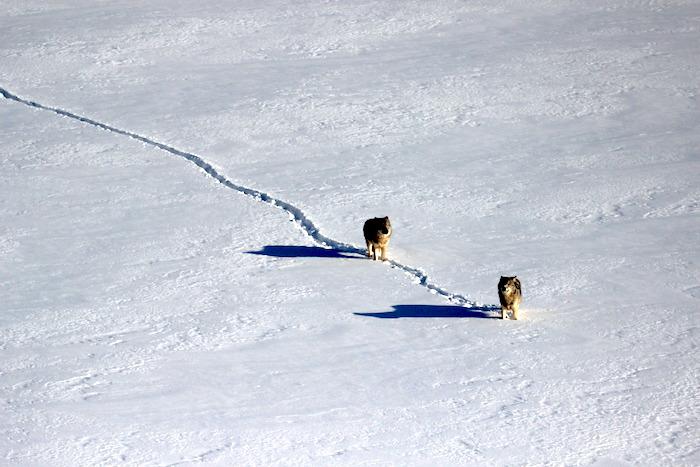
Up to six wolves could be relocated to Isle Royale National Park this fall/NPS file
Work could begin this week to transplant six wolves to Isle Royale National Park in a bid to keep the species alive on the island as a check against a burgeoning moose population.
The effort to move up to six wolves to the island in Lake Superior this fall is the first step of a three- to five-year effort to relocate up to 20-30 wolves to the park. That many wolves are needed to establish adequate genetic variability to accomplish the overall goal of restoring predation as a key part of the ecosystem on the island, the Park Service said.
To move forward with the operation, the Park Service is looking to transplant wolves from Minneosta and Michigan, and possibly Canada. To do so the agency is partnering with the Grand Portage Band of Lake Superior Chippewa, Michigan Department of Natural Resources, Minnesota Department of Natural Resources, U.S. Fish & Wildlife Service, USDA Wildlife Services, U.S. Geological Survey, University of Minnesota, and NPS units in Montana, Colorado, Nevada and Florida, NPS Midwest Regional Office, Washington Office and Biological Resources Division.
The operation is expected to conclude by early November. This phase of the operation will transport two to four wolves trapped in Minnesota and up to two wolves from Michigan to Isle Royale by amphibious aircraft or boat. All wolves transferred to the island would undergo a health screening by a wildlife veterinarian to determine suitability, and will be collared with GPS collars. The NPS plans to monitor ecological conditions and factors such as predation rates, genetics, moose-wolf ratios, and terrestrial and aquatic vegetation impacts to evaluate project success.
The park will also be working with partners to expand education and research programs. The National Parks of Lake Superior Foundation recently began a campaign to develop educational material and documentaries for youth focusing on the biology and complexities of the reintroduction and the results. A consortium for data sharing to advance more complex ecosystems studies is being considered.



Comments
I believe Durwood Allen would approve. Research needs to be long term and his studies clearly show the need for control of the moose population.